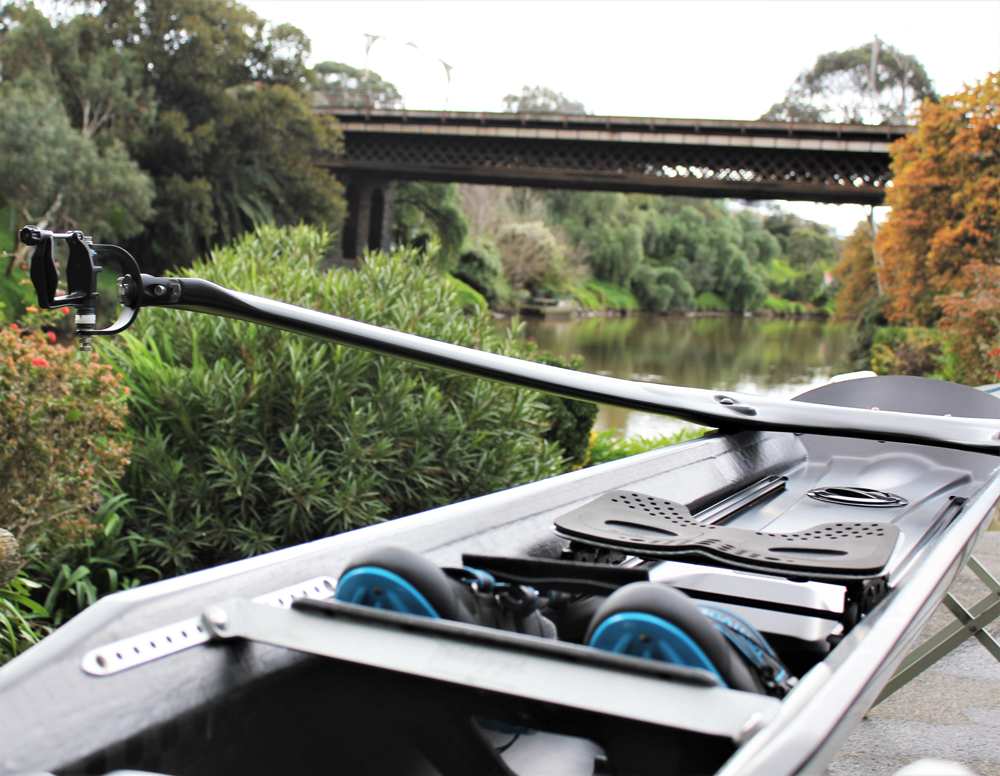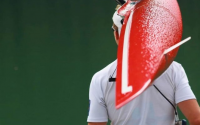Why reverse riggers?
Around 2009 Filippi introduced the reverse wing sculling rigger and for many people around the World this was their first introduction to a rear mounted rigger. For us in Australia however the reverse rigger was introduced by the legendary Ted Hale on his Chinese made boats in the early 2000s. Prior to this, both Empacher and Filippi did have the two-stay Carbon sculling riggers which are effectively a non-wing reverse rigger.
Since the time when Filippi popularised the reverse rigger, the design has been refined to the point now where they are true works of art and made with outstanding precision and quality control. At the 2012 London Olympics both the men’s and women’s single sculls were both won with reverse wing rigger sculls. The rest, as they say, is history.
When I discuss a new single scull purchase with a customer, I am always asked whether they should go for a standard stern mounted rigger or the reverse rigger. The short answer is reverse every time, but let me explain why. Firstly for me it is more intuitive to push something rather than pull it. Secondly it negates the need for back arms which means the use of quick release becomes a lot simpler. Thirdly it allows for a lot more freedom around the setup and positioning of the footstretcher and shoes in the boat. Finally it is beautiful rowing with an uninhibited view of the world in front of you.
In terms of negatives, some people like having the rigger in their peripheral vision to orientate themselves through the stroke cycle. Also stern mounted rigger arms are shorter so the rigger is more compact for transport.
Whether you go for a carbon or aluminium rigger is as much about aesthetics as it is about performance. Aesthetically the carbon riggers from Filippi and Empacher are absolutely gorgeous and if you are looking for a boat for life then look no further. There are two key performance benefits of the carbon rigger, 1) it is stiffer and 2) it is lighter so more material can be used in the boat to get it up to minimum weight, resulting in a stiffer hull.
What you should be looking for in reverse rigger design? Firstly if the flange of the boat (where the rigger is mounted) flexes when you wiggle it then walk away. It doesn’t matter how fancy the rigger looks, if where it bolts on to the boat moves then rigger is going to move. Secondly the longer the rigger arm, the more likely that is it going to flex. The main area of flex is actually the vertical flex of the rigger upward in the initial stage of the drive and the downward flex at the back turn. I have also rowed in an inexpensive single scull with a well designed reverse aluminium rigger that works better than a poorly designed carbon rigger from a different manufacturer.
Recently Filippi introduced the reverse sweep wing rigger which has produced some excellent results in testing with different rowing federations around the world. No doubt this will be the next step in extracting more performance from our athletes. If you are looking for the best then you simply have to look at what the world’s best rowers are using.
The national federations have access to the best possible equipment available and they nearly always converge on Filippi or Empacher boats. Given they are able to test any boat and rigger they like they often use one of these two brands and there is a reason for this.
Alastair Isherwood – Perfect Balance Rowing

Reverse Sculling Rigger



